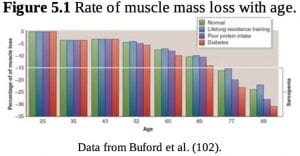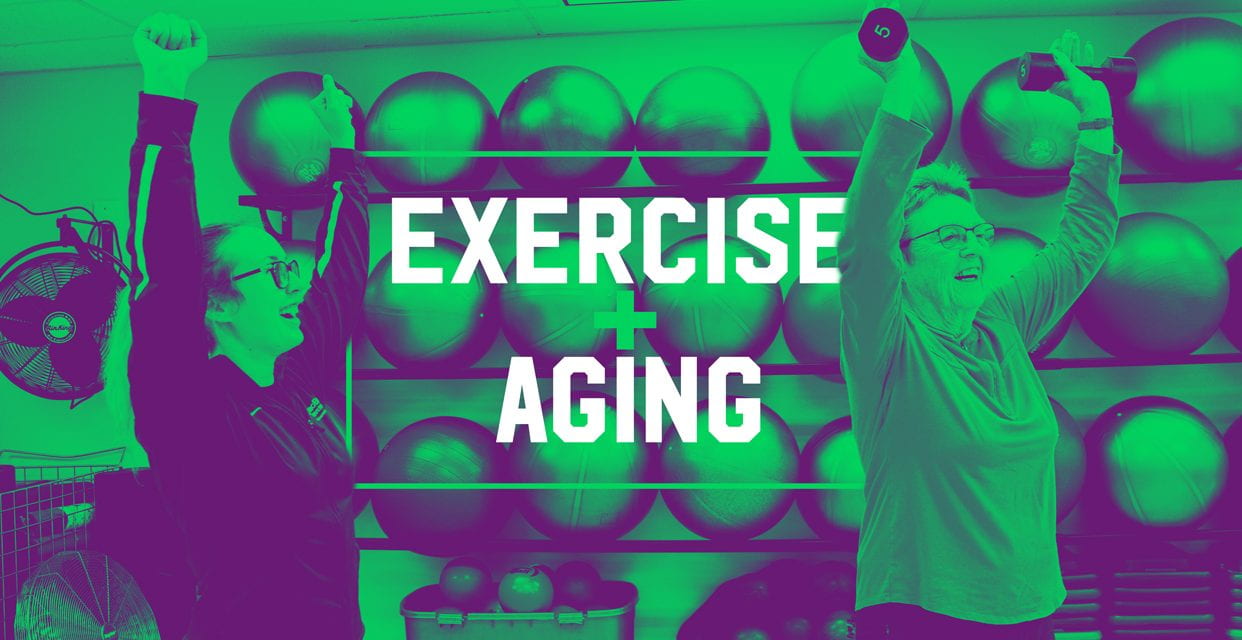The aging process slowly alters many physical and mental attributes. Aging affects the quantity and quality of muscle, while some conditions can accelerate the progression of muscle loss (atrophy). Although there are common diseases to older individuals that are not under their control, there are behaviours that are. Nutrition and physical activity can positively affect the loss of muscle mass.
“Human muscle mass reaches peak levels between the ages of 20 and 40. Thereafter, the body loses approximately 0.5% of its muscle mass per year during the fourth decade of life, increasing to 1%-2% annually after the age of 50 then accelerating to 3% annually after the age of 60”[1].
Metabolic, pulmonary, vascular, and immune diseases commonly associated with aging are a significant concern. Diseases can contribute to the loss of muscle mass and strength, limiting the ability to be active and independent.
Both Type I (slow twitch) and Type II (fast-twitch) muscle fibers are affected as we age. The effect of aging is more pronounced in fast-twitch fibers. These fibers decrease from 60% in sedentary young men to less than 30% in people over 801.
The importance of resistance training cannot be overstated as we age. Regular resistance training can delay muscle loss as we age. Age-related impairment of muscular adaptations are not evident. Still, it could be due to a combination of anabolic resistance, chronic low-grade systemic inflammation, compromised satellite cell function, and other factors1. Despite this, older population groups do respond well to resistance training. As we age, increasing our weekly resistance training is essential to preserve gains and attenuate losses.
The recommended dose of physical activity is 150 mins a week of light to moderate exercise or 90 minutes of moderate to vigorous exercise. As we age, a shift towards resistance training may be more beneficial than aerobic-based training.
Connect with one of our Exercise Specialists to set up a strength program to help you with strength training or try our Older Adult classes.
by Kyle Dunlop
Kyle Dunlop holds a Bachelor of Kinesiology and is certified with the Canadian Society for Exercise Physiology and National Strength and Conditioning Association as a Certified Exercise Physiologist and Strength and Conditioning Specialist. He specializes in strength, power training, and teaching fundamental movements to individuals and athletes to reduce injury.
[1] Brad Schoenfeld. “Science and development of muscle hypertrophy”, p. 108. 2016.


